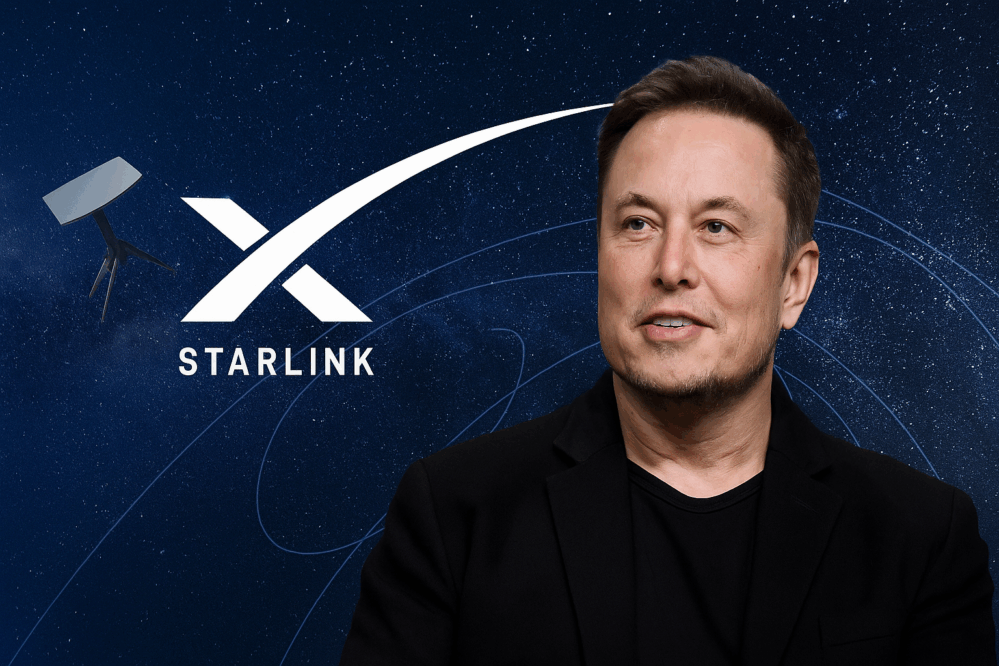
Starlink India Gets DoT Nod, Eyes 12-Month Launch Window
Elon Musk’s satellite internet firm Starlink India has received a critical license from the Department of Telecommunications (DoT), paving the way for its commercial rollout. This development could redefine India’s internet landscape, especially in rural and remote regions where traditional telecoms still struggle.
Starlink becomes the third company after Eutelsat OneWeb and Jio Satellite Communications to be granted such a license. Amazon’s Project Kuiper remains under review.
Bandwidth Promise: 600–700 Gbps
Starlink plans to offer 600–700 Gbps of bandwidth within 12 months. The company aims to reach under-served areas first, bridging the digital divide using its low-Earth orbit (LEO) satellite network.
The pricing is not yet confirmed for India. However, former Starlink India chief Sanjay Bhargava earlier hinted at an initial cost of around Rs 1.58 lakh per year, dropping to Rs 1.15 lakh from the second year. It remains to be seen if the new offering will be priced lower to compete in India’s ultra-cheap data market.
Jio and Airtel May Face New Competition
This launch puts pressure on domestic giants Jio and Airtel, both of which dominate ground-based broadband and mobile networks. While Jio has its own satellite arm, Jio Satellite Communications, and Airtel is partnered with OneWeb, neither has launched consumer-level services yet.
With Starlink’s global presence in over 100 countries, including rural and remote zones, its Indian foray could force the incumbents to accelerate their satellite strategies.
India’s Telecom Evolution Enters a New Phase
The telecom sector in India is undergoing a massive shift. From 2G to 5G rollouts, and now satellite-based internet, the progression is rapid. Starlink’s arrival signals a third-layer disruption—where connectivity doesn’t rely on towers or fiber.
For rural India, where laying fiber is expensive and time-consuming, satellite internet offers a leapfrog opportunity. This could also benefit remote schools, healthcare centers, and border zones with poor coverage.
Global Prices Hint at Indian Affordability
Globally, Starlink’s Lite plans cost around Rs 2,500 to Rs 4,000 in countries like Japan, Malaysia, and the US. In Bhutan and Bangladesh, prices range from Rs 3,000 to Rs 4,200 per month. Ghana, France, and Italy show similar trends.
However, a recent media report suggests Starlink may introduce a plan starting at just $10 a month—roughly Rs 850. If true, this would place Starlink among the most affordable satellite internet services in the world. Such pricing would align perfectly with India’s price-sensitive market, potentially fast-tracking adoption even in tier-2 and tier-3 towns.
To truly scale across India, Starlink may need to localize operations, secure subsidies or public-private partnerships, and deliver consistent speed at low cost.
Can Starlink Break the Telecom Monopoly?
India’s telecom scene has long been dominated by Jio and Airtel, with BSNL lagging behind. Both have been expanding into fiber broadband and 5G aggressively. But their infrastructure still falls short in rural regions.
Starlink’s satellite model skips the need for on-ground installations, enabling faster deployment. If executed well, Starlink could unlock new digital markets, much like how Jio disrupted telecom in 2016.
Yet, the success will depend on regulatory clarity, pricing, and ecosystem partnerships. Starlink will need to localize operations and ensure compliance with India’s digital regulations.
A Transformative Step Toward Digital Inclusion
As India marches towards becoming a digitally connected nation, the Starlink license marks a crucial milestone. Satellite internet is no longer a far-fetched dream, but a near-future reality.
With Kuiper by Amazon also waiting in the wings, competition is likely to intensify. This is great news for consumers—especially those long left out of the digital loop.
